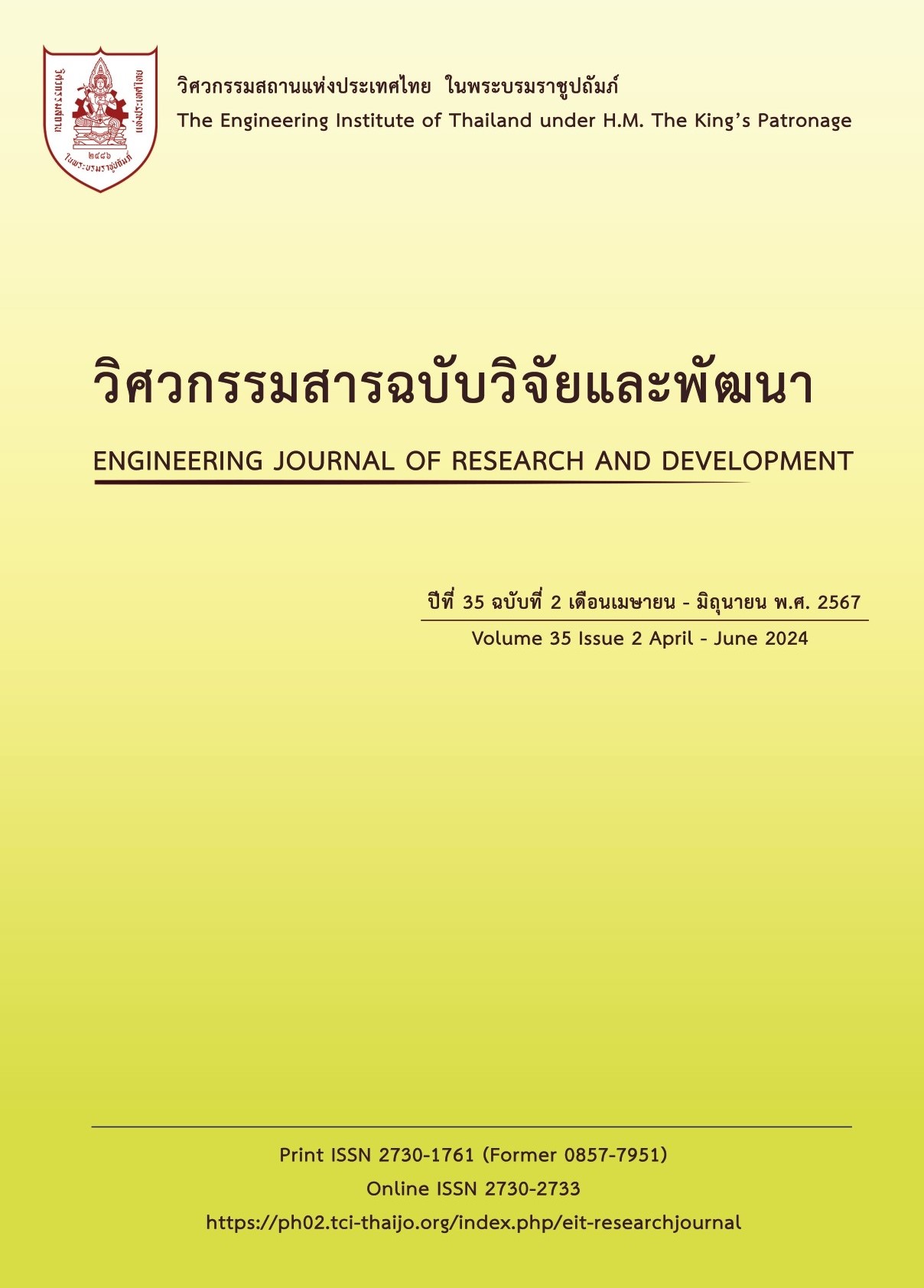BUILDING FOOTPRINT EXTRACTION FROM TRUE ORTHOPHOTO BY GEOSPATIAL SEGMENT ANYTHING MODEL
Main Article Content
Abstract
Building data is essential for visualizing the population or environment in some areas. The classic method of creating data layers is delineation from satellite imagery or orthophoto, which takes more human and time resources. Presently, there are free and open building footprints, but the completeness of buildings is not great, especially in urban areas. Recently, there is an available geospatial segment anything model that we can experiment with, and there is an urban mapping project from an unmanned aerial vehicle that processed true orthophoto with a ground sampling distance of 5 centimeters. Accordingly, there was a study of building footprint extraction with this model in the faculty of science and engineering at Chulalongkorn University. We do a completeness assessment of the building footprint with Intersection over Union (IOU). The research showed that IOUs are higher than 0.9 in both areas. Those said that extracted footprint data is nearly the same as self-delineation, which is the alternative way for building footprint generation with high positioning accuracy and completeness.
Article Details

This work is licensed under a Creative Commons Attribution-NonCommercial-NoDerivatives 4.0 International License.
The published articles are copyright of the Engineering Journal of Research and Development, The Engineering Institute of Thailand Under H.M. The King's Patronage (EIT).
References
Güneralp, B., Zhou, Y., Ürge-Vorsatz, D., Gupta, M., Yu, S., Patel, P.L., Fragkias, M., Li, X., Seto, K.C. Global Scenarios of Urban Density and Its Impacts on Building Energy Use Through 2050, Proceedings of the National Academy of Sciences,2017, 114, pp.8945–8950.
Zheng Y, Weng Q, Zheng Y. A Hybrid Approach for Three-Dimensional Building Reconstruction in Indianapolis from Lidar Data. Remote Sensing, 2017, 9 (4), pp.310.
Pieterse, E. Building with Ruins and Dreams: Some Thoughts on Realising Integrated Urban Development In South Africa Through Crisis. Urban Studies, 2006, 43, pp.285–304.
Microsoft Bing Maps. Worldwide Building Footprints Derived from Satellite Imagery: Github, 2022. Retrieved from: https://github.com/microsoft/GlobalMLBuildingFootprints#will-there-be-more-data-coming-for-other-geographies.
W. Sirko, S. Kashubin, M. Ritter, A. Annkah, Y.S.E. Bouchareb, Y. Dauphin, D. Keysers, M. Neumann, M. Cisse, J.A. Quinn. Continental-scale Building Detection from High Resolution Satellite Imagery. arXiv:2107.12283, 2021.
ไพศาล สันติธรรมนนท์. (2564). การรังวัดด้วยภาพดิจิทัล Digital Photogrammetry. กรุงเทพมหานคร: สำนักพิมพ์แห่งจุฬาลงกรณ์มหาวิทยาลัย
Qiusheng Wu, & Lucas Osco. SAMGEO: A Python Package for Segmenting Geospatial Data with The Segment Anything Model (SAM). 2023. Zenodo. https://doi.org/10.5281/zenodo.7966658
Kirillov, A., Mintun, E., Ravi, N., Mao, H., Rolland, C., Gustafson, L., Xiao, T., Whitehead, S., Berg, A., Lo, W., Dollár, P. & Girshick, R. SEGMENT ANYTHING. 2023.{ArXiv:2304.02643}.
Yarroudh, A. Lidar Automatic Unsupervised Segmentation Using Segment-anything Model (Sam) From Meta AI: Github. 2023. Retrieved from https://github.com/Yarroudh/segment-lidar.
Wufan Zhao, Claudio Persello, Alfred Stein End-to-end Roofline Extraction From Very High-resolution Remote Sensing Images. 2021 IEEE International Geoscience and Remote Sensing Symposium IGARSS
Miao, Y.; Jiang, S.; Xu, Y.; Wang, D. Feature Residual Analysis Network for Building Extraction from Remote Sensing Images. Applied Sciences, 2022, 12, pp.5095. https://doi.org/10.3390/app12105095


